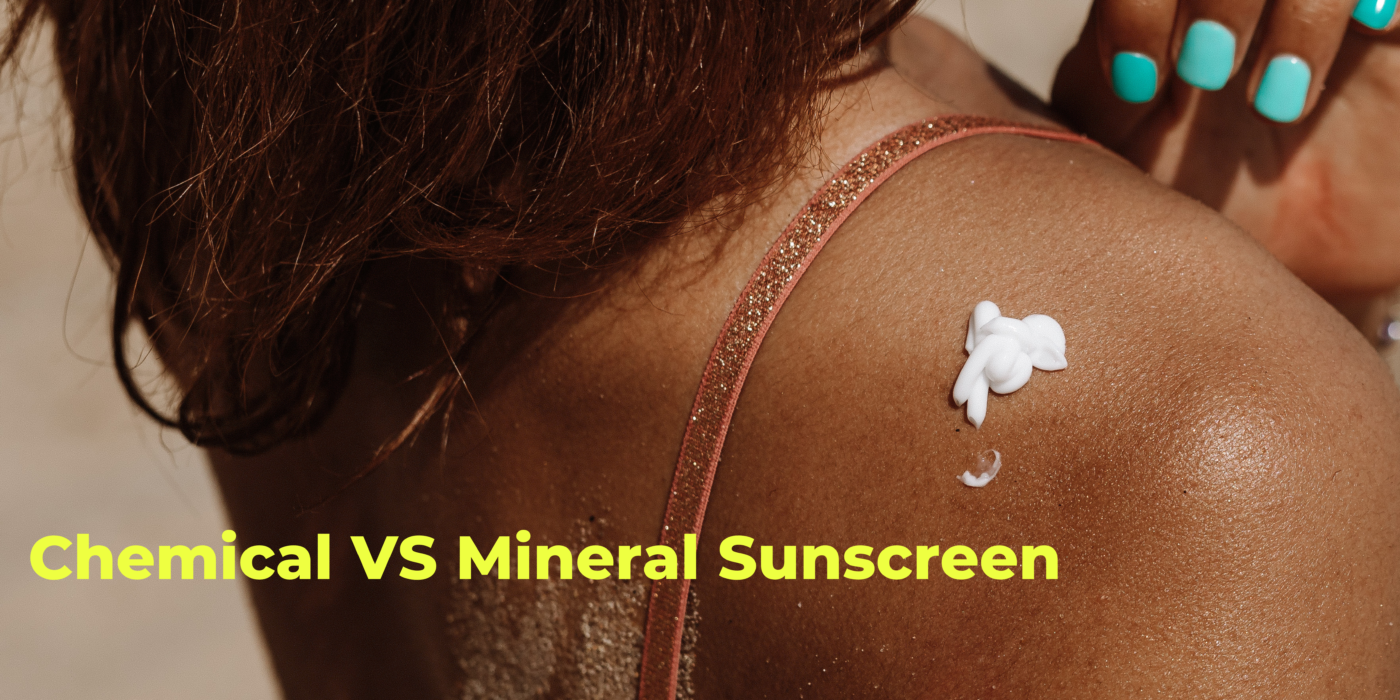Chemical Sunscreen
Chemical sunscreen refers to the type of sunscreen that uses active ingredients to absorb the sun’s rays, convert them into heat, then release that through the skin. Chemical sunscreens allow UV light into the skin and then react with one or more of the following ingredients – homosalate, octinoxate, oxybenzone, avobenzone, octocrylene – causing the chemical reaction mentioned earlier.
When using chemical sunscreens, ensure to apply at least 20 minutes before exposing yourself to direct sunlight because they take time to work. On the flip side, chemical sunscreens are generally easier to work with because they are lightweight and designed for absorption so they don’t leave the skin feeling greasy. They also don’t leave a white cast making them ideal for a broad range of skin tones.
This is the reason we launched our NEW lightweight SPF 50+ Aloe Invisible Sunscreen and infused it with hyaluronic acid and African aloe vera to protect the skin from harmful UVA and UVB rays, prevent sun damage, premature skin ageing, and dark spots, while keeping skin hydrated, moisturised, and cool. Use after a cleanser and moisturiser for best results..
Pro tip – click here to know the difference between hydrated and dehydrated skin and check out this list we put together on 7 ways to hydrate your skin.
Mineral Sunscreen
Mineral sunscreen (a.k.a. physical sunscreen) is the type of sunscreen that uses natural active ingredients to create a physical barrier on the skin that blocks and reflects UV rays from the body. The ingredients include zinc oxide and titanium oxide.
Their formulations tend to be thicker hence the white cast associated with ‘traditional sunscreen’, especially in deeper skin tones. Sunscreen-related breakouts could also come from the products being comedogenic (clogging pores),
Mineral sunscreens are generally considered safe. They also offer immediate protection from the sun which means they can be applied just before going outdoors.
Which one should you use?
We recommend doing a patch test to be on the safe side always no matter your skin type but mineral sunscreens go well with sensitive or acne-prone skin.
Here are 4 patch testing essentials:
- Apply a small amount of the product on your hands
- Rub it into the back of your inner wrist
- Preferably do this in the morning before you go to sleep
- Look out for any reactions in the morning
Alternatively, book an in-person one-on-one consultation with our in-house esthetician, Becca Kisyake, to get your questions and concerns addressed here.
Supplementary forms of sun protection
- Wearing hats and other protective clothing
- Avoiding direct sunlight during peak hours
- Avoiding UV light
Learnt something? Talk to us in the comment section 🙂

